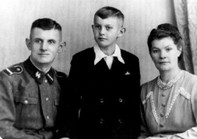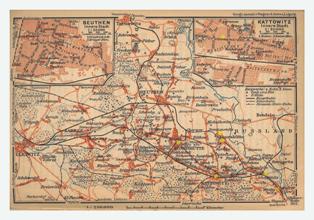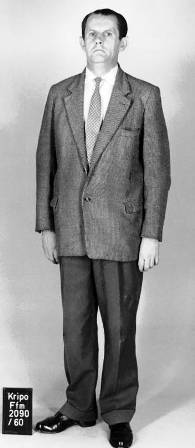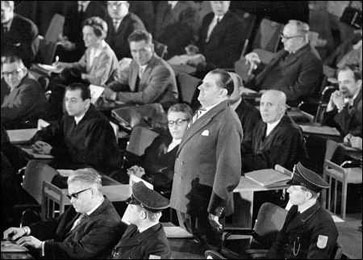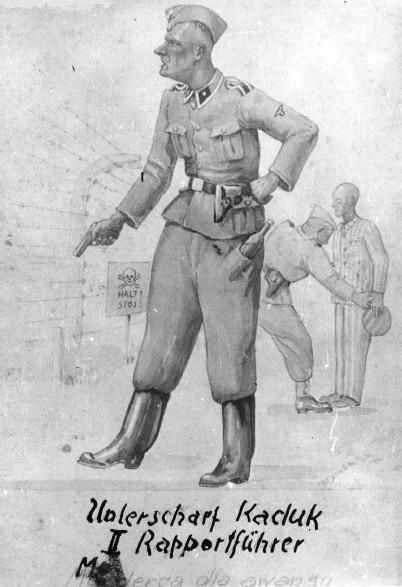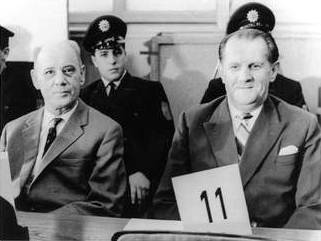Holocaust Education & Archive Research Team |
|
Other Camps
Key Nazi personalities in the Camp System The Labor & Extermination Camps
Auschwitz/Birkenau Jasenovac Klooga Majdanek Plaszow The Labor Camps
Trawniki
Concentration Camps
Transit Camps
| |||
Oswald Kaduk "SS Wasser-Pollak"
Oswald Kaduk was born on the 26 August 1906 in Konigshutte, Upper Silesia, the son of a blacksmith. He had five brothers all of whom were killed in the Second World War. Oswald Kaduk attended public school in Konigshutte and subsequently became a butcher. For a year and a half he worked in the municipal slaughterhouse of his home town.
In 1927 after a brief period of unemployment he became a member of the municipal fire department of Konigshutte, where he remained until being called –up after having volunteered to serve in the Waffen-SS, in the spring of 1940.
In 1942, after a fairly long illness, he was transferred to the guard detachment of the Auschwitz Concentration Camp. His first assignment in the camp was that of “block leader” – he said, “he only saw to quiet, order and discipline.”
Later he became leader of a work detail, he admitted at his pre-trial examination before the Auschwitz trial in Frankfurt –am- Main that he was present at the selections on the ramp, however he claimed never to have selected victims for the gas chambers from the incoming transports.
On the 20 April 1943 Roll Call Leader (Rapportfuhrer) Oswald Kaduk is among thirty-two members of the Guard Storm troopers that were awarded the Distinguished Service Cross Second Class with swords.
Milton Buky was deported to Auschwitz in December 1942 and he testified at the Auschwitz trial:
“The chosen victims were brought to the two former farm buildings in trucks and had to undress and get on line. Kaduk gave the orders, Moll only sometimes. The people were driven into the gas chambers with dogs.
They didn’t all go in always. Either they didn’t want to, or sometimes there were too many. Those who stayed outside were shot, in their clothes.
Judge Hofmeyer: "Who did that?"
“Mostly Kaduk." At first it was difficult to watch this, but later I got used to the sight. The procedure was repeated frequently, and there were always more and more people, primarily the aged and the sick.
A man inserted the Zyklon, also a car with a red cross always stood by. At first I assumed that the Red Cross truck came to look after the sick.”
Judge Hofmeyer: “Kaduk has been telling us that he had never gone to Birkenau.”
Witness: “That’s a lie! “Kaduk divided the members of the special detail into groups, Group 1 was the gas mask group that pulled the bodies out of the huts. Group 2 dragged them to the lorries. Group 3 loaded them on the trucks and Group 4 brought them to the incineration pits.
The bones that remained were chopped up and thrown into the water. In this connection the witness accuses Kaduk of the murder of a ten or eleven year old boy, “Kaduk took him by the hand, calmed him down, led him to a ditch and shot him.”
In a later interview Kaduk admitted to witnessing the gassing operation and made this statement:
"It's hard for me to say. But I have personally seen it. Only the doctors gave the orders to insert the gas. I have even seen SS men who were supposed to be involved in gassing operations cry.
And to them, the then doctor, Dr. Mengele said, 'You have to do it'. He said... I can remember Theuer well. I knew him from... was my fellow countryman, been a young man. And he said, 'You have to do it.' He did it, with tears in his eyes.
He inserted it and immediately shut the hatch. I was there."
He remained at Auschwitz – Birkenau until its evacuation in January 1945, Kaduk claimed, he walked to Mauthausen by foot.
Heinrich Durmeyer, one of the last group elders at the Auschwitz main camp said of Kaduk:
"Kaduk was an especially cruel SS man because he was an ethnic German, and felt he needed to prove he was just as tough as those who lived in Germany their whole lives. The other SS called him a Wasser-Pollak a disrespectful phrase for those Polish speaking Volksdeutsche from upper Silesia. He was an unpredictable in his actions but because he felt inferior and had to prove himself to the others, he killed whenever he had the chance and he drank more schnapps than water."
After the end of the war he assumed a false identity working in a sugar refinery in Lobau. In December 1946 he was arrested by the Soviet Military Police, a former inmate had identified him.
On 24 March 1947 he was sentenced to death, by a Soviet military tribunal for membership in the SS and belonging to criminal organisations. The death penalty was subsequently commuted to twenty-five years in prison.
He was released from Bautzen prison, in the former East Germany on the 26 April 1956, he then moved to West Berlin where he worked as a male nurse, his patients called him “Papa Kaduk.” In July 1959 Kaduk was again arrested, and appeared in the Auschwitz Trials in Frankfurt where he was one of the main accused. On August 19 1965 the court sentenced him to life imprisonment for murder in ten cases, and joint murder in at least one thousand cases.
At the trial testimony was given that in the late summer 1944 a prisoner was missing for the evening roll call, the other prisoners were forced to remain standing a camp wide search was conducted lasting several hours. When the missing man was found asleep, and brought back to the roll call, his punishment began.
Kaduk and another SS man leader hit the prisoner in such a way that he fell several times to the ground. After several such blows the prisoner remained lying on the back barely moving, but clearly still alive. Kaduk then proceeded to step on his thorax cracking four of his ribs with an audible snapping sound and which inevitably killed him.
Kaduk argued: " it was only two ribs, not four."
As if to ensure that the testimony was correct was more relevant than the death of the prisoner. However, due to the gravity of Kaduk's deeds, the responsible Spruchkammern rejected his various pleas for clemency.
One charge against him was that he enjoyed breaking the necks of elderly prisoners by standing on a walking stick placed against their necks.
Sources:
Auschwitz by Bernd Nauman, published by Pall Mall Press Auschwitz Chronicle by Danuta Czech, Henry Holt and Co New York 1989 KL Auschwitz – Seen by the SS Auschwitz Museum 1978 The Auschwitz Album – Yad Vashem & Auschwitz- Birkenau State Museum 2002 Wiener Library 1173/10 Copy statement re the activities of Oswald Kaduk in Auschwitz by Zdzislaw Wieczorek (3 Aug 1959) copy nd Holocaust Historical Society
Copyright. 2009 Henning Jensen, Chris Webb & Carmelo Lisciotto H.E.A.R.T
|
